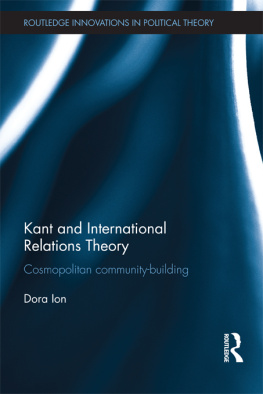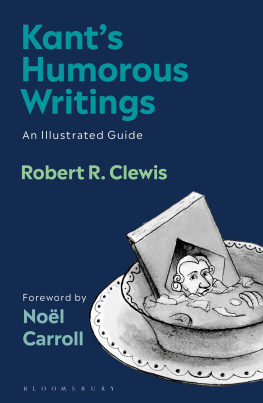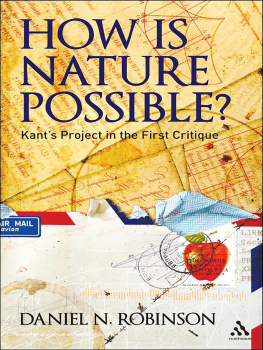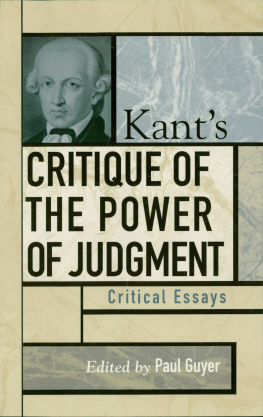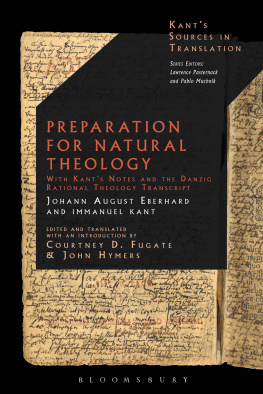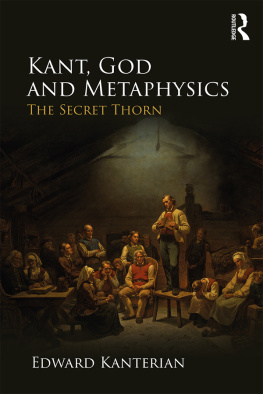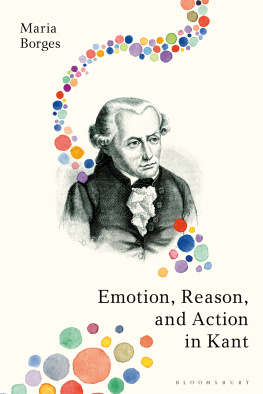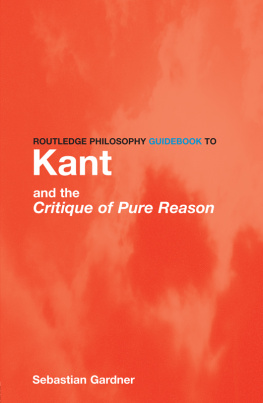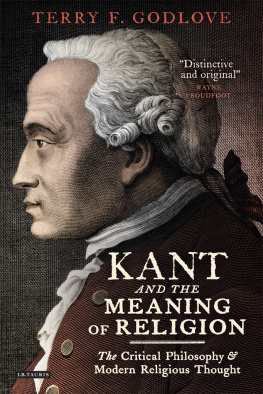
KANTS CRITICAL RELIGION
Examining a broad range of Kants philosophical writings, this book presents a fresh interpretation of Kants views on theology, religion and religious experience. Applying the new perspectival method of interpreting Kant expounded in Palmquists earlier work, Kants Critical Religion makes a substantial contribution to Kant-studies. The book is divided into four parts - Kants systematic foundations for interpreting religion; his Critical theology; his Critical religion; his Critical mysticism. Palmquist defends a number of innovative theses, including how: religious and theological themes form the backbone of Kants mature philosophical System; Kants treatment of organized religion provides the basis for a living and symbolic form of religious practice, compatible with the core teachings of Christianity; and the claims of mystics and others to have experiences of God are philosophically justifiable provided they are viewed solely from a judicial standpoint.
Presenting Kant as a sympathetic reformer of religion in general and of Christianity in particular, this book explores the development of Kants Critical philosophy, provides a detailed examination of an extensive range of secondary literature, assesses numerous interpretations and controversies surrounding his work, and looks at the implications for contemporary theological and philosophical debates.
Dedicated to Daniel Stephen
whose awesome birth, coming on the same day as the acceptance letter for my first publication, helped me put my scholarly calling in its proper perspective; as firstborn, you are always one step ahead
May God be your only judge!
Kants Critical Religion
Volume Two of Kants System of Perspectives
STEPHEN R. PALMQUIST
First published 2000 by Ashgate Publishing
Reissued 2019 by Routledge
2 Park Square, Milton Park, Abingdon, Oxon, OX14 4RN
52 Vanderbilt Avenue, New York, NY 10017
Routledge is an imprint of the Taylor & Francis Group, an informa business
Copyrigh 2000, Stephen R. Palmquist
All rights reserved. No part of this book may be reprinted or reproduced or utilised in any form or by any electronic, mechanical, or other means, now known or hereafter invented, including photocopying and recording, or in any information storage or retrieval system, without permission in writing from the publishers.
Notice:
Product or corporate names may be trademarks or registered trademarks, and are used only for identification and explanation without intent to infringe.
Publishers Note
The publisher has gone to great lengths to ensure the quality of this reprint but points out that some imperfections in the original copies may be apparent.
Disclaimer
The publisher has made every effort to trace copyright holders and welcomes correspondence from those they have been unable to contact.
A Library of Congress record exists under LC control number:
ISBN 13: 978-1-138-73861-4 (hbk)
ISBN 13: 978-1-315-18467-8 (ebk)
Table of Contents
Unlabeled diagrams in footnotes:
Most of the nearly six hundred footnotes and nine appendices in this book can be briefly skimmed or even skipped by readers who are not interested in examining the finer points of Kant-interpretation. There would be far more footnotes, were it not for the fact that I normally include abbreviated references in the main text. (References are included in the footnotes when they are accompanied by nonessential material such as quotations or critical comments relating to technical points of interpretation.) Each reference begins with a letter-number abbreviation, usually consisting of the first two letters of the authors surname and the last two numbers of the publication year, as listed in the Bibliography. Where relevant, this abbreviation is followed by a colon and the specific page number(s) from the text being cited. When a reference is to the same work as that of the reference immediately preceding in within the same paragraph of text, only the page numbers are cited.
of the Bibliography), and are followed in curved brackets by the pagination of the English translation whenever that translation does not specify the German pagination in its margins or if the translation used is not the one specified as standard in the Bibliography. (The texts used for Kt35 and Kt70 are not included as such in AA, so only the translators pagination is given, in brackets.) For translations of works not written by Kant, only the English pagination is cited (without curved brackets). Any deviations from these norms are specified in the corresponding Bibliographical entry.
Such textual references should simply be skipped over by anyone not interested in following up on the nuances being addressed. To minimize the obtrusiveness of such references, I use these abbreviations:
| A | = in this book or KSP1 (when prefixed to an upper case roman numeral); or, material unique to the first edition of Kt1, as mentioned above |
| alt. | = translation altered |
| cf. | = compare (when a comparison is not being made explicitly in the text, this usually indicates a reference to an opposing argument or opinion) |
| Ch. | = Chapter |
| e.a. | = emphasis added |
| e.g. | = for example |
| f | = and following (pages) |
| Fig. | = Figure |
| Figs. | = Figures |
| i.e. | = that is (normally used to restate the point in other words) |
| n | = note |
| q.a. | = quoted above (i.e., earlier in the same section, unless specified otherwise) |
| q.i. | = quoted in |
| s.a. | = see also (usually indicates another text citing the same or similar view) |
| s.e. | = see especially (usually indicates the best of numerous relevant references) |
| t.b. | = translators brackets (indicates that comments added to a quote are not mine) |
| viz., | = namely (used to specify the precise item(s) being referred to) |
| = text omitted from a quote where the last word quoted does not end a sentence |
| . | = text omitted from a quote where the last word quoted does end a sentence |
| . | = the quoted sentence ends at this point (i.e., punctuation after a quote always comes outside the close quote mark, unless the punctuation mark is part of the source text) |
| [] | = imbedded in a quote to designate text that is being quoted from the immediate context of the main quotation, usually having a direct grammatical connection |
Quotes reproduce the exact wording of the original, with the following two exceptions: (1) changes in translation are sometimes made, but only when the rationale is explained in the text (as with the term perspective, discussed in KSP1:IL3) or when the abbreviation alt. appears after the page number; and (2) italics and capitalizations are occasionally omitted if their original purpose is obscured by the brevity of the quote. When quoting from works in foreign languages for which no translation is cited in the Bibliography, translations are either my own, or else are taken from some other secondary source (which is then specified in brackets after the page number of the original reference).


